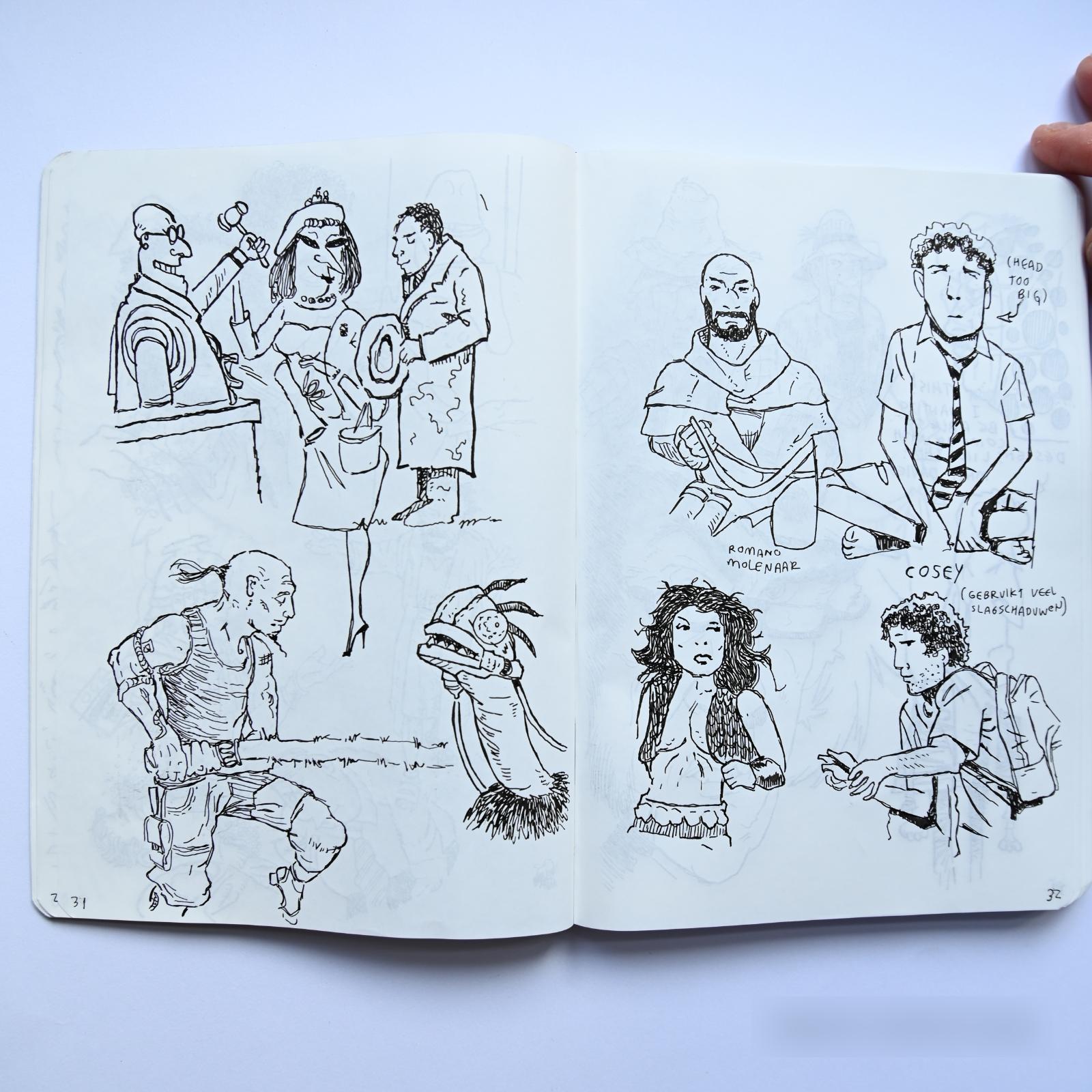#127 - Why Amateur Artists Have An Unfair Advantage Over The Professionals
The things you can do when you don’t have a boss!Warm-Up Drawing Exercises

Quickly become better at drawing—without burning out—by using my workbook.
In the seventeenth century, troupes of actors would travel around countries performing improvised plays called Commedia dell’Arte. A few stock characters were in there: the Doctor, Captain, Harlequin, Colombina, and many others.
The story was always the same: a young fellow and a young girl were in love, but the father disapproved.
They had rehearsed certain things they could do on autopilot to fall back on when the performances went wrong, but other than that, they mainly just improvised each time. The actors got into character, and they just let it go.
My daughter used to love it when I came up with stories in an improvised way. There are these two characters in a puppet show: Neighbor and Neighbor. They are constantly trying to do something and then failing at it. My daughter would listen with bated breath as I came up with such stories on the fly. They tended to be about her birthday, and these two neighbors were going to make a chocolate cake for her birthday and bring it along--but everything they tried went wrong.
Later, plays were performed in theaters. It was less casual. With Commedia dell’Arte, actors just went from market to market to perform, but now these plays were performed in theaters with audiences. Nothing could go wrong. So they scripted plays (as the old Greeks did, too, for theater performances), and these written plays got rehearsed and performed exactly like the writer wanted.
Even later, stories were told in the cinema. There, the stakes were even higher as films required enormous budgets. Having the script, the screenplay, to work from became crucial. You won’t freewheel and improvise on a fifty-million-dollar budget with top actors hanging around. The investors want guaranteed success.
With drawing, it can often be the same. When I draw in my sketchbook, I improvise. It’s an exciting process that can go in any direction. There are no limits. When creating finished pieces for customers, however, there are limits. The customer has an idea of what they want, what they want to use it for, how much they can pay, and when they need it. Suddenly, there are all these constraints.
You make mood boards, thumbnail sketches, and preliminary sketches to work out a design and show the customer. Then, you do careful pencil drawings and draw the final piece over that. It is a meticulous, controlled, scripted process.
And it could be more fun, at least for me.
Going unscripted and improvising is way more fun and usually yields far more expressive, lively, original, and surprising results. You can not do that with customers because they want specific things. But your personal work can be.
I came to this realization recently when I started making YouTube videos again. I decided to go unscripted to talk about a subject. Just say what came to mind, to let it be a natural flow of thought. The results are way better as you hear my voice in a natural way. You can hear it when I am reading from a script. It’s also far more effortless. I don’t have to write, edit, rehearse a script, and then edit the audio down later on. I press record and start talking. The amazing thing is that it takes a lot of writing to create a script. But if you are excited to talk about a subject, you can press record and start gabbing for a while.
Also, the line drawings I am doing in my recent YouTube videos, where I work from a reference line drawing, are more improvised than you may realize. I do work from reference, but I don’t measure things. I don’t try to be as accurate as possible. I look at the line, then at the page, and try to, informed by the original line in the reference, create a line that works well with the lines I already had on the page. Lines may go slightly off. I might get an angle or proportion wrong here or there. Time to improvise! I work with it and try to make something from it.
One advantage to drawing directly in ink is that you must commit to any line you place, right or wrong.
It is like the Commedia dell’Arte actors having to improvise when one of their colleagues does something wrong. They go from there, say, “Yes, and,” and continue with the show.
Improvised work is usually far less polished but has far more expressiveness and life. Watching, looking at, or listening to is generally more fun.
Improv is not something you can do for customers, though. It is an advantage amateurs have, a way to create better, more expressive, and lively personal work.